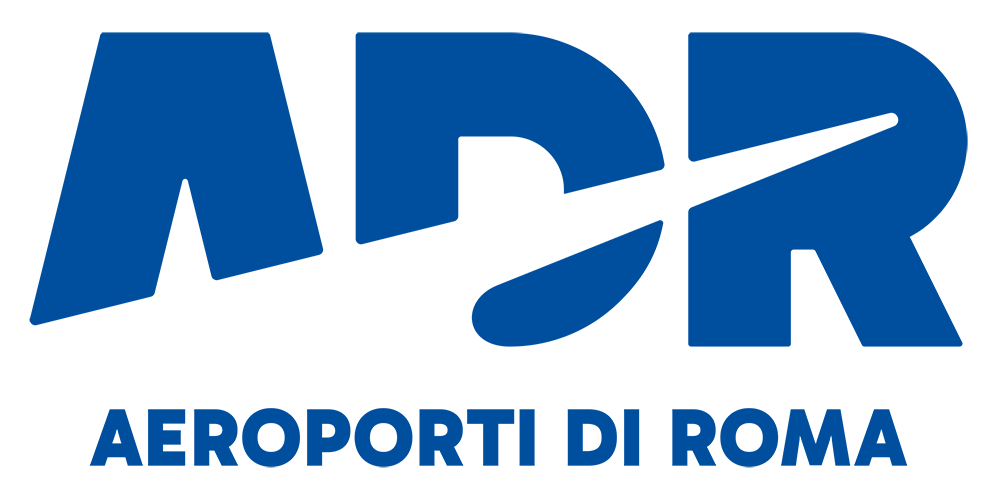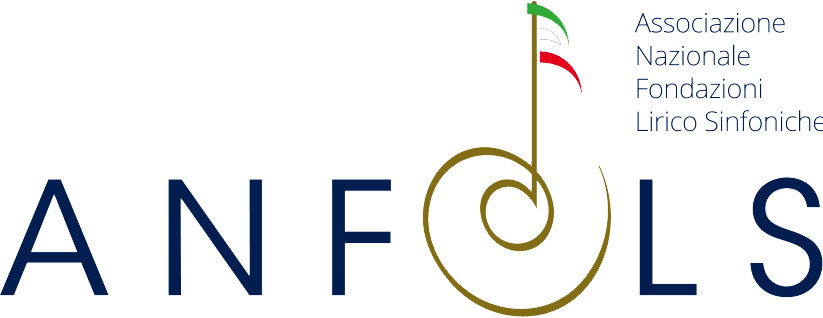The identity of a modern European Theatre: a combination of tradition and innovation
THE OPERA SEASON
Big international co-productions, with major theatres – and not only within Europe – to offer our audiences the chance to see rarely performed operas, an absolute masterpiece of twentieth century and some great classic melodramas given a new contemporary twist. These are the guidelines for the Teatro dell’Opera di Roma’s forthcoming 2016-17 opera season.
Tristan und Isolde will inaugurate the new season on the 27th of November at the Teatro Costanzi. This will be a first for Daniele Gatti, one of the greatest Italian conductors and already very dear to the Roman public. In recent years he has been particularly active in pursuing his international career. The opera, a co-production with the Théâtre des Champs-Élysées in Paris and the De Nationale Opera in Amsterdam, will be directed by Pierre Audi. Repeat performances until the 11th of December.
Another co-production – this time with the De Nationale Opera of Amsterdam and the Opéra National de Paris – will be a new production of Il Trovatore (February 28 to March 10) conducted by Jader Bignamini and directed by Àlex Ollé. The Roman public may remember his version of Ligeti’s Le Grande Macabre in 2009 and, more recently, Madama Butterfly. The new season will also include the other two operas from Verdi’s “popular trilogy”. Firstly, Rigoletto (2nd – 10th December) conducted by newcomer Michele Gamba and a recent success at the Teatro alla Scala, a chance for audiences to enjoy Leo Muscato’s October 2014 staging again. Then, to close the 2016 opera season, Verdi’s celebrated La Traviata (29th October – 4th November), conducted by Stefano Ranzani, directed by Sofia Coppola and costumes by Valentino, Chiuri and Piccioli.
An ambitious project involving the Metropolitan Opera in New York, the English National Opera and the De Nationale Opera in Amsterdam will be a new production of Alban Berg’s Lulu, conducted by Alejo Pérez (who recently conducted Rossini’s Cenerentola to public acclaim). The programme for the next season also includes a more recent opera that, despite being composed almost ninety years ago, is still incredibly modern. Alban Berg worked on his Lulu, with a libretto based on two of Franz Wedekind’s works, from 1928 until his death in 1935, leaving the work unfinished, albeit only missing the instrumentation for the third act. The first and only performance of this opera at the Teatro dell’Opera in Rome was during the 1967/68 season, and then limited to just the first two acts. In 1979 the musicologist Friedrich Cerha completed the opera, which was performed the same year in Paris, conducted by Pierre Boulez. The full version of Lulu, as completed by Cerha, will be performed next season at the Costanzi (19th May – 30th May, 2017), directed by William Kentridge and Luc De Wit. Kentridge is a great South African artist, whose recent artwork Triumphs & Laments is a frieze of roughly 500 metres created by erasing the patina of pollution and bacteria along the embankment walls of the River Tiber in Rome to produce a procession of figures). Many of his works and installations are to be seen in major museums around the world.
The first opera in 2017, and the first of the various new productions next season, will be Mozart’s Cosi fan tutte, the opera in the Mozart and Da Ponte trilogy least often performed at the Costanzi: first staged at this theatre in 1950, there have only been five other performances, the most recent being in 2007. The new production (18th – 27th January, 2017) will be conducted by Speranza Scappucci, a young orchestra director with a budding career, and directed by Graham Vick, who, after last season’s Mahagonny, is bound to amaze us with the subtle play of irony found in Mozart’s masterpiece.
From 22nd March to 4th April at the Costanzi, a new production of Donizetti’s Maria Stuarda in collaboration with the Teatro San Carlo in Naples. Conducted by Paolo Arrivabeni and directed by Andrea De Rosa, this is another rarely performed opera at the Costanzi (1969/70, 1997 and 2006).
On the 21st of April a famous Italian film director, Marco Bellocchio, will make his operatic debut with Andrea Chénier. He is best known for his rare ability to portray family dramas and explore political tensions. The opera, conducted by Roberto Abbado and a new co-production with the Teatro La Fenice in Venice, will be staged until the 2nd of May.
Rossini’s Il Viaggio a Reims (13th – 22nd June, 2017) has never before been staged by the Teatro dell’Opera. A De Nationale Opera in Amsterdam production, it will be conducted by Stefano Montanari and directed by Damiano Michieletto (whose recent, interesting production of Puccini’s Trittico was well received by the public). The Viaggio is a one-act dramma giocoso. The first of Rossini’s Parisian operas (1824), it was performed as a cantata at the Théâtre Italien in the French capital in 1825. The earliest modern revival was conducted by Claudio Abbado at the Rossini Opera Festival in Pesaro in 1984. The story revolves around the coronation of the French King Charles X, the ceremony taking place in the French town of Reims. A colourful crowd of dignitaries are en route, allowing for a series of typically “Rossinian” mishaps, misunderstandings and amorous intrigues.
Another opera in the 2016/2017 season will surely satisfy those who enjoy rare performances: Daniel Auber’s Fra Diavolo (8th – 21st October, 2017). Another new co-production, this time with the Teatro Massimo of Palermo, it will be conducted by Rory Macdonald (his debut in Rome) and directed by Giorgio Barberio Corsetti. This is an opéra-comique to a libretto by Eugène Scribe, inspired by the extraordinary stories (in a romantic key) of the notorious brigand Michele Pezza in the countryside around Terracina. The opera was first performed in Paris in 1830, but only staged at the Costanzi once, in May 1884, when it enjoyed a run of fifteen performances.
Tosca returns to Rome towards the end of the 2016/2017 season (14th – 24th October) with a set design based on the original sketches of 14th January, 1900, as part of the “Rome Opera Aperta – Memory” project. Conducted by Daniele Callegari and directed by Alessandro Talevi.
All operas will have supertitles in Italian and English.
THE BALLET SEASON
The 2016/2017 ballet season, under the direction of Eleanor Abbagnato, will be inaugurated at the Teatro Costanzi on Sunday, the 18th of December at 8:00 p.m. with a record-breaking revival: Giuliano Peparini’s The Nutcracker. The Teatro dell’Opera production by this visionary Roman director and choreographer was a sell-out last December and a great success with the audience and critics alike. This version of Tchaikovsky’s two-act ballet, a Christmas classic, is destined to become a generational phenomenon. The last performance is on the 24th of December, 2016.
December ends with an unprecedented cameo for the Teatro dell’Opera: Il pipistrello [“La Chauve-Souris” or “The Bat”] (1979) by the remarkable choreographer Roland Petit. A delightful two-act ballet set to music by Douglas Gamley and Johan Strauss Jr., it is a charming story of romance and friendship, enriched with the lively atmosphere at Maxim’s and some witty humour. The perfect way to see the old year out. The last performance will be on the 8th of January 2017.
February sees Pyotr Ilyich Tchaikovsky’s classic Sleeping Beauty (8 – 15 February, 2017), with sets and costumes by Aldo Buti. This will be a new Teatro dell’Opera di Roma production for Jean-Guillaume Bart’s new choreography. This French étoile, maître and choreographer has already choreographed numerous ballets including Arthur Saint-Léon’s La Source (2011). Bart has a special bond with Tchaikovsky’s late nineteenth century masterpiece: he received the Danseur Étoile Award at the Paris Opera at the end of his performance in Rudolf Nureyev’s version of The Sleeping Beauty on the 5th of January 2000.
From the 31st of March to the 8th of April the Teatro dell’Opera will stage a unique trio of ballets: The Concert (1956) by the great American choreographer Jerome Robbins; Annonciation (1995) by the clever French choreographer Angelin Preljocaj; and Cacti (2010) by the talented Swedish choreographer Alexander Ekman. Three very diverse works for an evening of modern ballet. The first, set to Frederic Chopin’s music, is a choreographic divertissement in which the dancers act as if at a concert, listening attentively to the music, and then let their imagination run wild, producing some funny, playful situations. The second, set to music by Stéphane Roy and Antonio Vivaldi, is a ballet duet, a careful interpretation of the Annunciation in terms of the body (a rarely addressed theme in choreography). The third, set to music by Joseph Haydn, Ludwig van Beethoven, Franz Schubert and Gustav Mahler, is a spirited game played by 16 dancers and 4 musicians appearing on stage. Together they create the rhythm of their dance, parodying the excesses of this art form. This will be the first time at the Teatro dell’Opera for each of these three titles.
After the summer break, the 2016/2017 ballet season resumes at the Teatro Costanzi in September with two events: the must-see Soirée Roland Petit (8-13 September) and a revival of Patricia Ruanne’s exciting Giselle (20-24 September).
The Soirée Roland Petit will include some absolute masterpieces: Carmen (1949), L’Arlesienne (1974) and Le Jeune Homme et la Mort (1946). Three narrative ballets – a genre in which Roland Petit excelled – portraying intense, tormented love stories to great dramatic effect. Despite all their efforts, the charming young protagonists cannot avoid their fate in a succession of poetic and evocative scenes. Another young women meets her death in Patricia Ruanne’s Giselle, a version that audiences are still talking about. The movement restores a logical narrative, for an immediate understanding of the characters and the relationships between them.
David Coleman, Carlo Donadio, David Garforth and Nicolae Moldoveanu will be the respective conductors of the Orchestra del Teatro dell’Opera di Roma for The Nutcracker and Sleeping Beauty; Sleeping Beauty (10, 11 and 12 February); Il pipistrello and Robbins / Preljocaj / Ekman; Giselle. The music for Angelin Preljocaj’s Annonciation duet will be pre-recorded, as will that for the Soirée Roland Petit, in both cases played by Orchestra del Teatro dell’Opera di Rome.
The Ballet Director and étoile Eleonora Abbagnato will dance Angelin Preljocaj’s Annonciation and Roland Petit’s Le Jeune Homme et la Mort. The new ballet season will also see performances by the Teatro dell’Opera’s Principal Dancers Alessandra Amato, Manuel Paruccini, Rebecca White, Soloists and Ballet Corps. There will, of course, also be various international guest stars.
OTHER EVENTS
It is no coincidence that the second edition of the Fast Forward Festival curated by Giorgio Battistelli, Artistic Director – Contemporary and Symphony Music, will start in May 2017, around the time that Lulu, a twentieth-century avant-garde masterpiece, will be staged at the Costanzi. As in this year’s recent edition, the 2017 festival will see a series of performances of musical and instrumental theatre in various venues around the city, including several Roman cultural institutions. Its boundaries are not set in stone, like much contemporary art: an ambiguity that only enriches this initiative. Different languages linked to sound, words, the body and gestures will showcase the amazing creative vitality of our time. Many of the artists, composers and performers involved in the festival are also planning to meet the public – a great opportunity for suggestions and useful provocation.
Giorgio Battistelli will also be organising a new series of symphonic concerts “A Mirror of the Time” during which a composition from the past will be compared to a twentieth-century classic and a contemporary work. Many conductors will be involved, including George Pehlivanian, Ingo Metzmacher, Giovanni Sollima (also performing as cellist), Daniel Smith and Peter Rundel. All concerts will be presented by Stefano Catucci.
The Teatro dell’Opera’s Lezioni di Opera initiative continues, hosted by Giovanni Bietti. In his lessons, Bietti explains to his loyal following the context and the particularities of the musical language of each opera and each composer featured in the programme. Although he uses simple, accessible terminology, he is never superficial as he points out both the most obvious and hidden connections between the words, sounds and dramatic action that give each opera its special character.
The 2016/2017 season will also see a continuation of the Fabbrica Young Artist Program that has already afforded young talents the chance to become involved in productions in the current season, as well as many of those in the 2016/2017 programme. A rare chance for young artists, who already have received training in the various trades that “make” opera, to get “hands-on” experience. They have benefited from the guidance of the many experts responsible for staging the operas in this season’s programme, as they will also do next season. The program also includes some autonomous productions.
The 2016/2017 season sees the return of “Vietato ai maggiori di 26 anni” [Under 26-year-olds only]: young audiences are offered the chance to watch general (dress) rehearsals for just 15 euros.
The first Opera Camion project will start in a few weeks’ time, still part of the 2015/2016 season, but which we hope will continue in the future. A specially equipped truck with a simple set design will bring an reduced version of a classic opera to the suburbs of Rome suburb. This year, 2016, marks the bicentennial of the first performance of The Barber of Seville at the Teatro Argentina. No surprise, therefore, that we have chosen Rossini’s masterpiece, an opera that is particularly suited to appeal to a public unaccustomed to frequenting the opera house. Opera Camion takes opera out onto the streets to win over a new audience!
The Teatro dell’Opera will also continue to encourage the musical awareness of the very young next season through not only its own School of Choral Singing, but also the “Canta con me!” [Sing with me] project, presented to the public in February and benefiting from the important patronage of President of the Senate, Pietro Grasso. Roughly four hundred highly enthusiastic children from four schools in the Roman suburbs took part in a concert at the Teatro Costanzi on the 30th of May to celebrate the end of the first year of this new project. This is yet another important Teatro dell’Opera initiative directed at the audience of the future and one which we fully intend to continue next season.
Finally, the I coreografi, i ballerini e noi project foresees three meetings open to the public covering some of the ballets in the programme. A chance for us to introduce the general public to the world of choreographers, dancers and our theatre, similar to our popular Lezioni di Opera initiative. These meetings, chaired by the scholar and researcher Gaia Clotilde Chernetich, will provide an informal approach to the ballets concerned, using short monographic portraits, video projections and extracts danced by the Principal Dancers and Soloists of the Teatro dell’Opera di Roma Ballet Corps. The public will be encouraged to explore the gestures and pantomime seen in the choreographic works in question.












